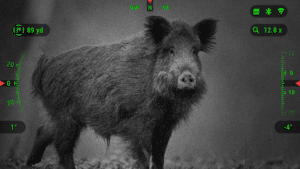Show me the man or woman who says that they are not afraid of walking alone in the dark of night and I will show you a fool, a liar, or someone with night vision equipment. Because in the dark, there’s a lot of opportunity to run into things that go bump in the night.
Flashlights are great; everyone should have one in the car, when out walking, and in several areas of your house – with spare batteries and periodic function checks. If you have a flashlight and a bad guy does not, you have an edge, with one exception: as soon as you pop it on, everybody knows where you are.
Maybe it’s time to get an extra CAPABILITY rather than buy your ninth pistol, so let’s shed light on seeing at night. Were it possible that I could tell you exactly what brand of night vision equipment to buy, it would be easy, but I can’t! This is because each of us “sees” differently, and then our brains “translate” that vision in their own way, so what works for me may or may not work the same for you. In an ideal world, before buying you could field test night vision equipment, but in reality you probably can’t. You may find a video online showing the view through a device, but in the absence of handling one for a night, you need to know some fundamentals.
Today we’re visiting night vision scopes, binoculars, or monocular (basically half a bino) that rely on some ambient light, such as moonlight and starlight. Many come with internal infrared (IR) illuminators, or an external IR which looks like flashlights but transmits light that cannot be seen by the naked eye, but can be seen by the night vision device. Within range, you’ll see phenomenal details.
Night vision devices with IR have been around a while. The Germans fielded one, aptly called “Vampire” in 1945, but its problem was weight. The rifle weighed 11 lb.; the scope and IR source 5 lb.; and the battery and backpack 30 lb. Today, this capability generally weighs 2-4 lb.
Looking through night vision (IR), you generally see images in shades of gray (such as above of the wild hog) or green. An animal’s eyes will often glow. You can see hair, fur, movement, but it is not a pure optical view like a daylight scope; you are looking at something like a tiny TV screen that shows the image. Generally, you see things a few hundred yards away, depending on the power of the IR light.
Night vision IR can “see” cars, boats, buildings, and trucks. You see animals on the edges of cornfields, but generally not too far inside the cornfield. Night vision IR devices have zoom magnification, but sometimes at higher magnification the image blurs a bit; you’ll figure out the right power and what you are seeing by using it.
What do you want this device to do? Hunting feral hogs at night? Looking for vermin around a grain silo? Detecting would-be criminals bent on breaking and entering? Detecting heat leaks (thermal can; night vision can’t) in insulation? Finding your pet dog if he runs outside? Looking for rats and mice does not require long range. But concerning criminals in a rural area, the further out you see them, the longer you have to make a decision what to do.
Many devices have GPS, are Wi-Fi capable, can record what you see and transmit that in near real time to your associates – or even the police. Many have range finders and one-shot zeroing. Some can withstand recoil up to a .375 H&H or .416 Barrett, but verify before you buy. And you can use them on a weapon or off. Go to www.atncorp.com. Their videos are typical of possibilities, especially the one on ATN RADAR.
Will you be stationary in your activity or moving? A night vision scope, with an external IR, on a rifle can get bulky; if you are stationary, that is less of an issue.
Since we are often looking at $500-$1,000 for a night vision device (sometimes more); and $1,500-$4,500 for a thermal device (sometimes more), we need an acquisition strategy.
Consider buying night vision (IR) first. As you’ll read next month, advances in thermal technology occur frequently; delay buying thermal may allow you to buy a better capability later. Plain night vision does not seem to be making these rapid advances: IR is IR, and will be less expensive.
Most importantly In regione caecorum rex est luscus. With night vision IR, you will be able to see better than almost any adversary out there.
